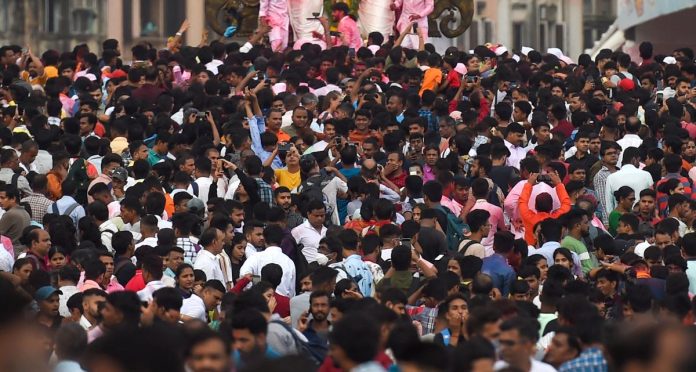- Indian people often feel quite embarrassed while mentioning our demographic dividends in the form of a burgeoning population. No conversation seems complete without having to touch base with the population. Yes, we have encountered denigration, derision, and scornfully spoken to on the matter of population. Nonetheless, we are Indians and hence would not mind gamely allowing the conversation on the topic to meander along. Of course, our eastern neighbour China used to be always hyphenated with India whenever the topic of the population used to come up. Not so long ago, China used to be officially called the most populous nation in the world. Now, that tag has conveniently passed on to us. Let’s see how we can make this an advantageous situation.

PC: SRIRAM HARIDASS,RAKESH SARWAL
- As reported, China in 2022 recorded a decline in population by 8.5 lakhs, the first annual decline in six decades. For the uninitiated, the last population decline came from famine, this one is a result of both an unyieldingly harsh and short-sighted population control policy as well as a demographic transition from an agrarian society to an industrial one. Global experience, spanning Scandinavia to Singapore, shows that even generous fiscal incentives are unable to reverse a population decline once it’s set in. There’s a lesson here for India too. Remember, the UN forecasted India will be the most populous nation in the world in 2023. It is incumbent that India learns the right lessons from an unprecedented global demographic trend.
- Look at the statistics. Total Fertility Rate (TFR) the world over are crashing. The UN forecast the current global population of about 8 billion will rise to 9.7 billion by 2050. However, 66% of the increase will come because of momentum arising out of past growth. Therefore, the big challenge ahead is to avoid a situation where a country grows old before it gets rich. China already faces this problem and it’s unlikely to catch up with the US in per capita income terms. To illustrate, the UN estimates by 2030, China’s population in the 19-60 age bracket at a little over 800 million will be about 10% lower than India. Note that demographic transition has two important phases. In the first stage, fertility rates fall leading to the working-age population growing faster than others.

PC: Clara E. Piano
- As such, it represents a potential demographic dividend when there’s an opportunity for a big spurt in growth and investment. It’s however not preordained. It requires the right mix of policy to make the most of this limited demographic window. Where does India stand here? India’s TFR fell to a mere two in the 2019-21 period, which is below the replacement rate. At present, World Bank data shows that India’s working-age population is 68% versus a global average of 65%. Even in the age group up to 14 years, India’s share at 26% is a shade above the world average. Yes, not enough Indians are working, particularly women as just 46% of our potential labour force are in the job market. India’s future depends on reversing it to reap the demographic dividend.






